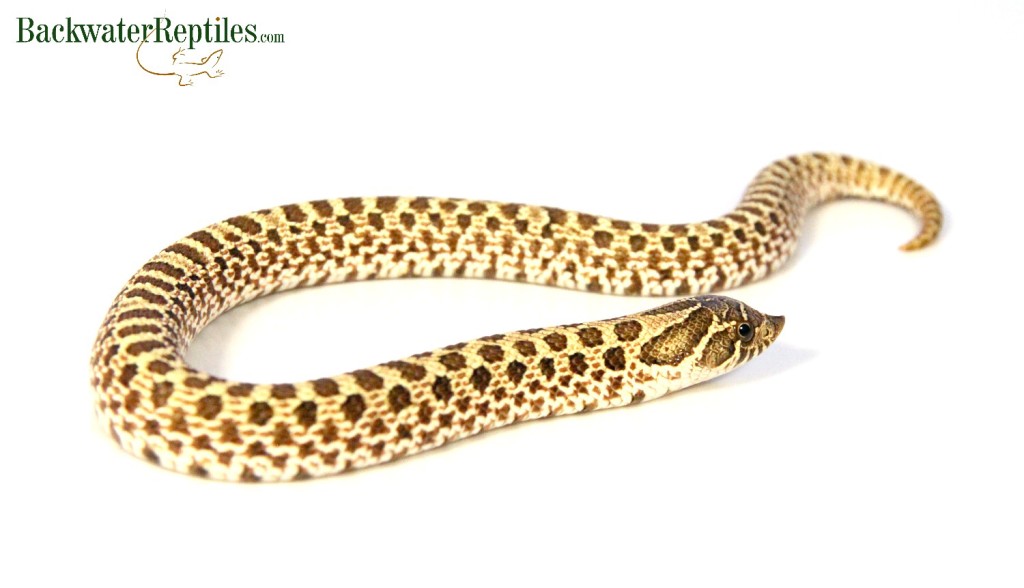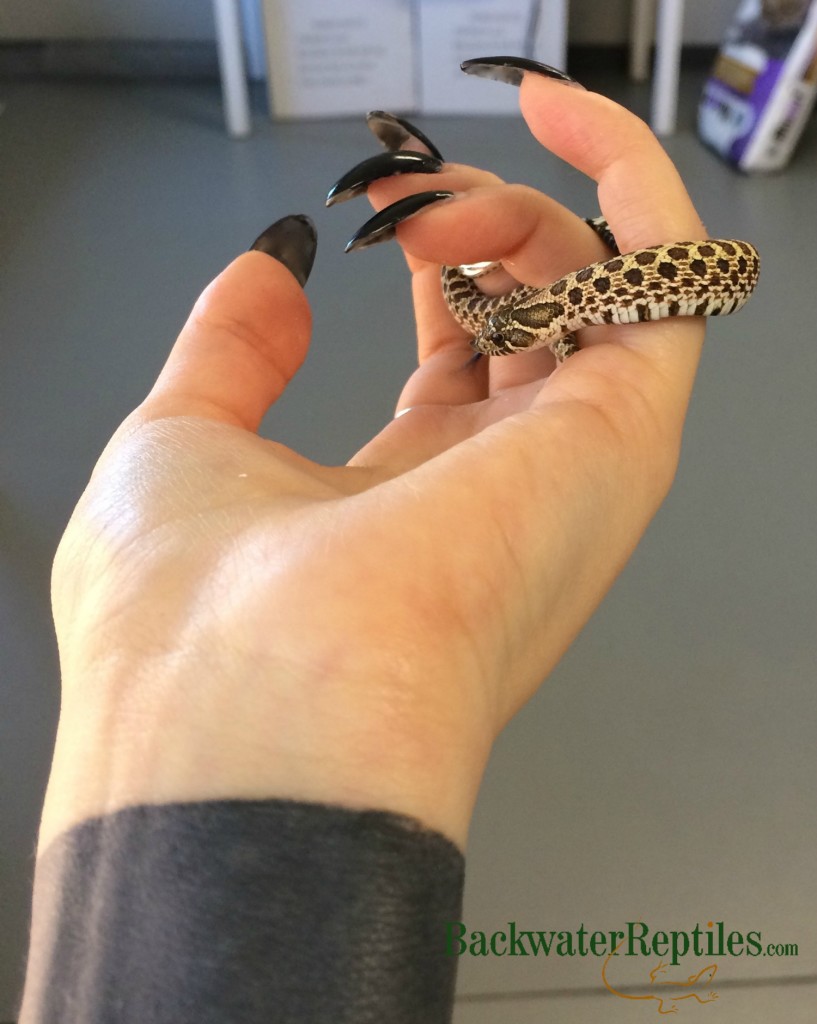If you’re looking for more information on Western Hognose snake care, you’ve come to the right place. A snake that is quickly growing in popularity among reptile enthusiasts is the Western Hognose Snake (Heterodon nasicus).
These small colubrids are not only cute, but they are well-suited to captivity and make great pets for families and classrooms. In this article, we’ll go over the care requirements for this quirky little snake.

Western Hognose Snake Description
The first thing most people notice about the hognose snake is its trademark pointy nose. This little upturned nose is used to assist the hognose when it burrows and digs in lose, sandy soil.
Hognose snakes are stout in build with keeled scales. They can be a variety of colors, but they tend to be a light brown or cream color with darker brown, beige, black, orange or olive patterns.
Hognose snakes are also known for their peculiar defense mechanisms. First of all, these snakes will sometimes roll over and play dead when they feel threatened. They even open their mouth and allow their tongue to loll out! However, we would like to mention that if they feel too threatened, they will also release a foul-smelling musk to accompany this playing dead behavior, which is less amusing than the act of playing dead.

Another harmless hognose defense is to puff up and push air through its skull and rostral bone creating a unique hissing noise. They will also flatten out and attempt to appear much larger than they are in reality. This might be accompanied by some feigned aggression. Hognoses might strike out, but they won’t bite. Instead, they’ll essentially headbutt any enemy with their nose! When it comes down to it, hognose snakes are all bark and no bite.
As we’ve already established, Western hognose snakes stay relatively small. Males tend to max out around twenty-four inches long (two feet), while females can grow to be just shy of three feet long. They have been known to live between ten and eighteen years in captivity.
Western Hognose Snake Care
Due to its small size, you will not need a large home for your hognose snake. Hatchlings will thrive in a five-gallon size enclosure and an adult will do great in a twenty gallon tank. Because they are a ground-dwelling species with burrowing and digging habits, vertical space is not as important as floor space. We also recommend that whatever type of cage/enclosure you opt for have a secure lid since all snakes tend to be escape artists, no matter what species they are.
You need not supply many cage furnishings for a hognose. They prefer to burrow and hide, so vegetation is not needed unless you want to decorate the enclosure. All a hognose really needs in its enclosure as far as “furniture” is concerned is a sturdy water dish and a few hiding spaces.
There are a lot of choices when it comes to substrate for a hognose. Hatchlings do best in newspaper since it is inexpensive, easy to clean, and also helps prevent bacterial growth. For an adult, you can provide aspen snake bedding, newspaper, paper towels, or sand. But please keep in mind that housing any snake in sand can cause impaction. If you do use sand as a substrate, we highly recommend feeding your snake in a separate, clean container so that no accidental ingestion of the sand occurs.
Hognoses are diurnal snakes and will require a full-spectrum UV lighting set up in order to stay healthy. You can manually turn your snake’s lights on and off each day, or you can buy lights that are on timers at nearly every pet store.
Your hognose’s basking spot needs to stay around 90 degrees Fahrenheit. The cooler end of the tank is usually fine at room temperature. This means anywhere from 72 to 80 degrees Fahrenheit. Just be sure it doesn’t get too cold at night or too warm during the day and that the enclosure has a hot side and a cooler side (i.e. that there is a temperature gradient).

Western Hognose Snake Care: Feeding
Hognose snakes are little piggies when it comes to meal time. They’re also not too concerned with accuracy when it comes to striking at their food. This means that even though they aren’t trying to intentionally hurt you, they might accidentally bite you when you attempt to feed them. All you need to do to avoid this is feed your snake using tongs or tweezers.
At Backwater Reptiles, we feed our hognose snakes appropriately sized frozen/thawed mice. Adults can be fed once per week, but growing hatchlings should be offered food at least twice per week.
Conclusion – Western Hognose Snake Care
We recommend Western hognose snakes for reptile lovers of all experience levels. These compact and humorous little snakes are not only easy to care for, they’re easy to fall in love with!
Ready for a Western hognose snake of your own? Backwater Reptiles has several morphs available for sale.
